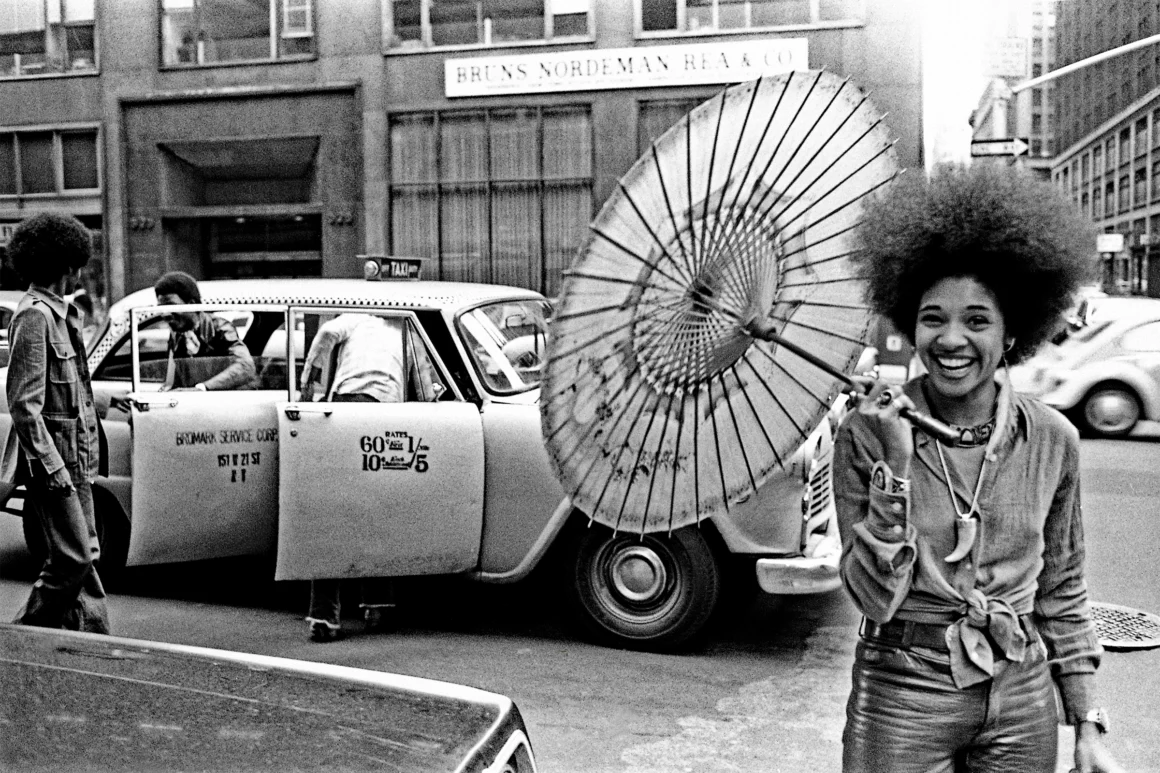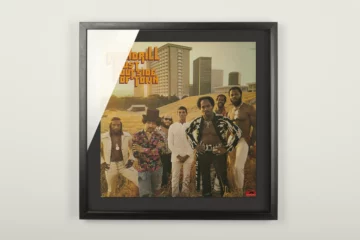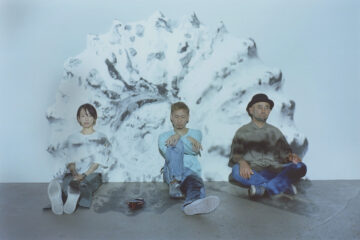For a long time Betty was only known to the hardcore funk-heads. Over time she slowly gained a devoted following. This changed when Hip Hop artists like Ice Cube, Talib Kweli and Ludacris sampled her records in the late 90s and early 2000s. Soon after three of her albums were re-pressed, reaching a new generation of listeners who were ready to embrace her unique and daring artistic expression. But in the early 1970s, when Betty was releasing her hard funk records, it was quite the opposite. The mainstream was not particularly supportive.
Her song »If I’m in Luck I Just Might Get Picked Up« was actually banned from the radio for being too raw and explicit. On top of that, she faced opposition from major labels who were pressuring her to change her image. Evidently, conservative America was not ready for Betty’s raspy voice singing about sexual desire as a black woman, while wearing mini shorts and silver glittery thigh-high boots with a full-blown afro.

They Say I'm Different

Betty Davis Black Vinyl Edition
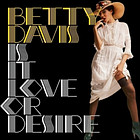
Is This Love Or Desire
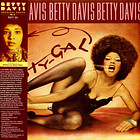
Nasty Gal Metallic Gold Vinyl Edition
Betty’s bold and provocative stage presence made her an icon of liberation and self-expression that inspired artists like Prince and Erykah Badu. She also played an evident role in Miles Davis’ life and musical evolution by introducing him to soul rock musicians like Jimi Hendrix and Sly and the Stone Family.
She married the jazz legend in 1968, who was almost double her age at the time. It was a complicated, even violent marriage and they already separated after a year. »Every day married to him was a day I earned the name Davis«, she mentions in her documentary »Betty: They Say I’m Different« which was released in 2017 just five years before her death.
NYC Trendsetter
Elizabeth Mabry was born in 1945 on July 26 in a small town in Northern California. She was raised listening to her grandmother’s Blues records and especially enjoyed those by Muddy Waters, John Lee Hooker, B. B. King and Big Mama Thornton. Betty was a musically gifted child. When she was just twelve years old she already wrote her first song Bake a Cake of Love which she preformed at local talent shows. At the age of sixteen she moved to New York to live with an aunt and to pursue an artistic career. She enrolled at the Fashion Institute of Technology and took on several side jobs to get by. In her early 20s she signed with the prestigious modeling agency Wilhelmina and soon found herself featured in major magazines such as Ebony and Glamour.
Betty was a clubber and hung out at different hot spots in the Village including the Cheetah, the Electric Circus and Leviticus. She became fully immersed in the scene. She DJ-ed, had gigs as an MC at the respected beat poet venue Le Cafe Figaro and even worked part time as a waitress. Betty also hosted parties at a club called the Cellar where she frequently booked the Chamber Brothers, a blues rock band originally from Mississippi. According to Betty’s former roommate, Denise Oliver-Velez: »Betty not only ran the place, she was the trendsetter and the maestro of the scene.«
Her first single Get Ready For Betty was released in 1964 on DCP International. It made no waves but Betty continued and even founded her own label: Betty Mabry Music Co. She definitely knew about business. Through songwriting for the Chamber Brothers she secured recording contracts with Columbia and CBS Records for the single »Uptown«. Naturally, she ended up networking and while in Los Angeles, she had a fling with Hugh Masekela. He ended up producing a single for her: »Live, Love, Learn / It’s My Life«, released on Columbia Records in 1968. Even though it showcased Betty’s singing and song writing talent, it didn’t make it to the Top 40.
An artist ahead of her time
When comparing the songs she released as Betty Mabry to those she recorded as Betty Davis, it is clear she went through a transformation musically after her divorce. The two first met in 1967 at the famous jazz club the Village Gate where Betty went to see Miles’ performance. After the show, Miles sent over his bodyguard to ask if she was interested in having a drink with him. Despite not releasing a hit record, Betty had clearly made a name for herself. Although their marriage was short lived, creatively one could argue it was productive.
Betty appeared on the cover »Filles de Kilimanjaro« and even had a song devoted to her; »Mademoiselle Mabry.« The album later would mark Miles shift from acoustic recordings to embracing the electric sound of jazz rock fusion. She was clearly his muse. Because of Betty, Miles was keeping up with the musical trends of the time and was able to evolve himself as and artist successfully. And not only musically, during the time they were together he changed his entire wardrobe. Betty soon had him leaving his formal tailored suits behind replacing them with loose shirts, platform shoes, leather jackets and funky scarves.

Miles wrote in his autobiography, which was published three years before his death: »Betty was a big influence on my personal life as well as my musical life. She introduced me to the music of Jimi Hendrix – and to Jimi Hendrix himself – and other black rock music and musicians. She knew Sly Stone and all those guys, and she was great herself. If Betty were singing today she’d be something like Madonna; like Prince, only as a woman. She was the beginning of all that when she was singing as Betty Davis. She was just ahead of her time.«
There was certainly a power imbalance, perhaps due to the age difference but most likely due to his status and abusive behavior. While they were still together Miles produced an album with Betty for Columbia Records but it was shelved, only to be partially released as the »The Columbia Years: 1968-69« in 2016. It still remains unclear why. Betty stated in an interview she believed that: »Miles was afraid that… I’d leave him. He thought I’d become a star. He wanted to hold me back in a way. He was very old-fashion.« Miles on the other hand accused her of having and affair with Jimi Hendrix and said this was the reason why their marriage fell apart. Betty always maintained that Jimi and her were just »very very very good friends.«
»She was beautiful and outspoken and different from anyone I had ever met.«
Michael Lang (Just Sunshine Records)
The divorce from Miles was a major set back, but it did not make shy Betty away from the music business directly. She continued songwriting and ended up meeting the manager of the Commodores who approached her to write demos for the bands upcoming recording project with Motown. Betty however declined the offer because the label was unwilling to give her full publishing rights as a songwriter. After this fiasco, she took the opportunity and moved to London for a modeling contract in 1971. Here she met Eric Clapton, they briefly had a relationship but didn’t release any music together.
Already a year later she moved back to the US in the Francisco Bay area where she met Michael Lang, founder of Just Sunshine Records. He saw Betty’s potential; »She was beautiful and outspoken and different from anyone I had ever met.« In 1973 her self-titled debut album was released, followed by »They Say I’m Different« two years later. Michael thought she might grow faster and signed her off to Island Records, the same year »Nasty Gal« was released. The three groundbreaking albums voiced radical ideas of black womanhood while showcasing a revolutionary fusion of funk, rock, and soul. This unapologetic approach to blending genres paved the way for future generations of musicians, but it did not fly off the shelves like Bob Marley’s records.
»Stars Starve, You Know«
Despite the lack of commercial success, there were thousands who loved Betty. One of her shows in 1974 even almost caused a riot when 7000 fans tried to fill the auditorium at the Loyola University near Baltimore which only had a capacity for 5000. However an accumulation of circumstances led Betty to retreat from the spotlight relatively early. In
2007 she revealed in an interview why she lost interest in the music business: »Jimi Hendrix was a good friend of mine and I knew what had happened to him. I mean, the music business I’m in killed one of my friends… The rock era is dead now. The people who didn’t die physically died emotionally. You see, it’s hard enough to keep it together personally. Then you have to give a piece of yourself to the public, and a piece to this one and that one. By the time you’re finished giving pieces away, you don’t even know who you are.«

Because Betty was unwilling to compromise her artistic vision, she faced many obstacles in the music industry. If you compare the cover of her last album »Is it Love or Desire« to her previous three, especially »Nasty Gal«, there is a stark contrast. It explains why Betty left the label and confirms how Island Records was trying to influence and tame her artistic image to be more appealing to the mainstream. In her song »Stars Starve, You Know« from the album »Is it Love or Desire« she exposed the challenges of show business, Island Records was not happy with it. The album’s thirty-three-year shelving until its 2009 release by Light in the Attic marks her trailblazing attitude as musician.
Betty’s remarkable life story underscores once again that being a talented artist is not enough to make it in the music business. Even with connections, there are always people that can make or break it for you. Yet Betty’s unshakeable confidence set out a powerful message. The fact that she built a network of connections in the music industry, wrote, recorded and released music like she did as a black woman, without conforming to societal expectations, was unheard of at the time and truly made Betty the Queen of Funk.

